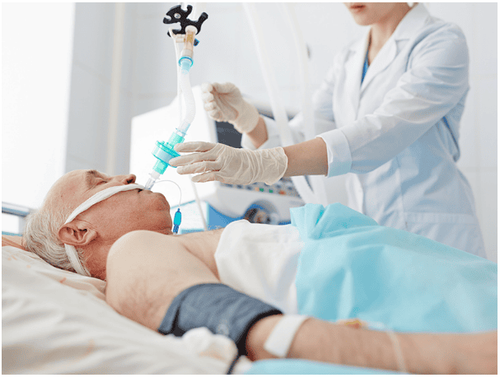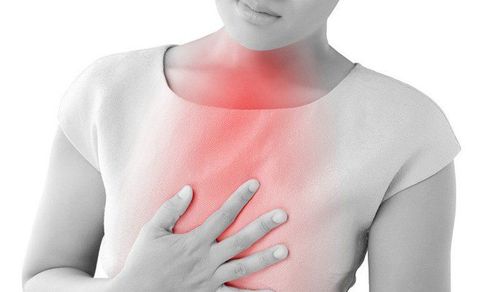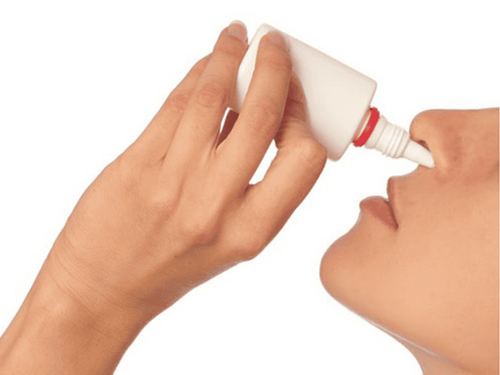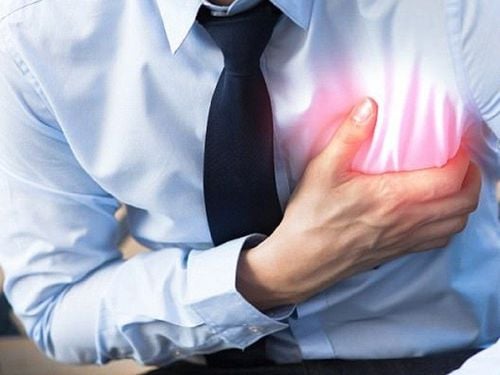This is an automatically translated article.
The article is professionally consulted by Master, Doctor Nguyen Hoang The Nhan - Department of Pediatrics - Neonatology - Vinmec Nha Trang International General Hospital.
Acute respiratory failure is a functional disorder of the respiratory system, causing the body to turn cyan, making it difficult to breathe due to a lack of O2 and an excess of CO2. Timely diagnosis and management of acute respiratory failure play an important role in preventing dangerous complications.
1. Diagnosis of acute respiratory failure
1.1. Ask the sick
Information about the patient's medical history and symptoms is considered the first diagnostic step in the criteria for acute respiratory failure. Primary causes that may be related to airway abnormalities include:
Patient has a history of cardiovascular disease, asthma, or meningitis (convulsions and coma) Onset of symptoms such as: fever, cough, wheezing Foreign object stuck in airway Risk of poisoning due to alcohol, sleeping pills, or substances such as Morphin, Methemoglobin, ....
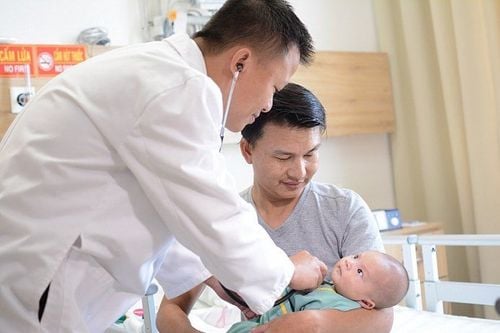
Hỏi tiền sử bệnh án và các triệu chứng gặp phải ở bệnh nhân là bước chẩn đoán đầu tiên trong tiêu chuẩn suy hô hấp cấp
1.2. Clinical examination
To recognize the risk and assess the severity of the disease, doctors often rely on the child's condition and breathing efficiency. Specifically:
Breathing effort Irregular breathing frequency, sometimes fast, sometimes slow Respiratory muscle contractions (severe respiratory failure) Abnormal breathing sounds: wheezing, whining, wheezing Hearing muted lungs (very serious sign) severe), disproportionate alveolar murmur (alveolar hypoechoic) In addition, the consequences of respiratory failure also affect other organs, with accompanying manifestations such as:
Arrhythmia: When the attack paroxysmal tachycardia, bradycardia, vasoconstriction Unstable blood pressure: Initially blood pressure rises but eventually decreases Cardiac arrest: Due to severe hypoxia or excessive carbon dioxide elevation Blue or cyanotic skin and mucous membranes : Blood vessels are constricted due to lack of O2 Child has a lot of sweating Decreased cognitive perception: Poor excitability, lethargy, hypotonia Other signs: Change in size of hepatobiliary system, decrease in secretory kidney function Urinary tract, chest concave, ...
1.3. Conduct tests
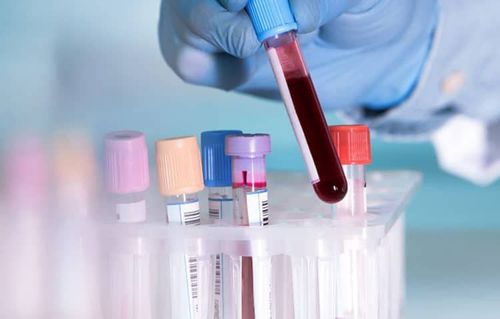
Tiến hành các xét nghiệm để chẩn đoán suy hô hấp cấp
Doctors may ask pediatric patients to conduct laboratory tests with the following goals:
Contribute to determining the correctness of the diagnosis Find the cause of respiratory failure Help assess the severity, severity of complications. Symptoms of the disease Appropriate treatment of acute respiratory failure Common tests in diagnosing acute respiratory failure include:
Arterial blood gases: When a child has acute respiratory failure, there will be changes in PaO2, SaO2 index. , pH value, bicarbonate, residual alkali, ... in blood gas Chest X-ray: Indicated for all children with acute respiratory failure to determine if the disease causes damage to the lungs, from there Have appropriate management Echocardiogram : When the patient has a history of heart disease or when chest X-ray detects signs of cardiac abnormality or signs of heart failure Blood chemistry: Biochemical disturbances go away. Common accompanying is hyperkalemia, hypocalcemia Blood count: Check for abnormalities in white blood cells, red blood cells, and platelets. Microbiology: Diagnosing the cause of disease
2. Treatment of acute respiratory failure
2.1. The principles of treatment
Airway clearance. ● Respiratory support.● Maintain oxygen carrying capacity.
Provide enough energy.
Treat the cause.
2.2. Open airways
When the child is comatose, the doctor will put the baby's head back and lift the patient's chin to conduct aspiration of viscous mucus in the nose and throat. Oropharyngeal catheterization is another option when normal suction cannot be performed with the above method. In the case of pediatric patients with upper airway obstruction due to foreign bodies, the doctor will apply the Heimlich maneuver. In contrast, children under 2 years old will be patted on the back combined with chest compression to remove the foreign body. If the patient has croup, use nebulizer Adrenaline 1 , Dexamethasone TM, TB,...2.3. Oxygen supply
Indication+ Cyanosis and/or SaO2 < 90% and/or PaO2 < 60 mmHg.
+ Severe chest constriction breathing, fast breathing > 70 times/min.
Method of delivery:
+ Oxygen canuyn (FiO230-40%), young children: 0.5-3 liters/minute, older children: 1-6 liters/minute.
+ Mask with or without reserve bag (FiO2 40 - 100%) 6 - 8 liters/min.
If the patient stops breathing, breathing is not effective: - Squeeze the balloon through the mask with 100% FiO2. - Intubation to help breathing.
2.4. Supportive treatment
● Maintain oxygen supply to tissues and cells: - Maintain oxygen carrying capacity: keep Hct from 30-40%. - Maintain adequate cardiac output: fluids, inotropic drugs. - Reduce oxygen consumption: reduce fever if the temperature is above 38.5oC.● Nutrition:
- Should be given by mouth, if not suckling/eating should put a gastric tube, milk gavage or 10% salted powder. To avoid aspiration pneumonia caused by gastroesophageal reflux, it is necessary to divide the meal into several meals and slow drip.
- Energy needs to increase by 30 - 50% of normal needs to compensate for increased respiratory work and avoid exhaustion. In the case of mechanical ventilation, the air supply is sufficiently humidified, so the volume of fluid is reduced to three-quarters of the requirement.
- When giving whole parenteral nutrition, avoid giving too much Glucose to increase CO2, the ratio between lipid and glucide is 1:1.
● Prevention of hospital-acquired infections:
- Sterile respiratory equipment.
- Aseptic care techniques: suction of sputum, especially sputum aspiration through endotracheal intubation.
3. Care plan for acute respiratory failure

Cầm chuẩn bị kế hoạch chăm sóc bệnh suy hô hấp cấp kỹ lưỡng
Nutrition should give priority to eating by mouth, if it is not possible, then proceed to insert a gastric tube to pump milk or salty powder. It is necessary to divide meals into several hourly meals or slow drop baskets to avoid children getting aspiration pneumonia due to gastroesophageal reflux. Because pediatric patients take a lot of effort to breathe, it is necessary to provide energy sources more than 30-50% of normal needs, but limit Glucose to avoid increasing CO2.
Prevention of infection Fighting superinfection and nosocomial infections is also a point that should be especially noted in the care plan for acute respiratory failure. Care techniques should ensure sterility, especially endotracheal sputum aspirators and respiratory equipment must be completely cleaned and aseptic. In addition, patients need to use antibiotics rationally and strictly adhere to the regimen.
Vinmec International General Hospital is a leading hospital in the diagnosis and treatment of respiratory diseases, including acute respiratory failure in children. Vinmec systems nationwide have a team of doctors with leading experience in the industry along with modern equipment, ensuring absolute hygiene and sterility standards. This is the place to diagnose and treat acute respiratory failure for children trusted by many parents.
Please dial HOTLINE for more information or register for an appointment HERE. Download MyVinmec app to make appointments faster and to manage your bookings easily.




